First aid for dogs
The same applies to dogs as it does to humans: In emergencies, doing the right thing until the vet arrives can save lives. In many places, veterinary practices or kennel clubs also offer special first aid courses for dogs, where you can learn the most important measures. We have summarised some of them for you below.
Check whether the dog is conscious
- Call your dog by name and watch its ears, eyes and tail for reactions.
- You should also test the pupillary reaction (sudden exposure to light causes the pupil to contract) and the eyelid reflex (lightly touching the eyelid causes the eye to close immediately).
- Check the heart/pulse rate (you can feel the heartbeat on the left lateral chest wall and the pulse in the middle of the inner thigh, the normal value is between 80 and 120 beats per minute).
- Check the breathing (rise and fall of the chest, 10 to 40 breaths per minute is the norm).
- Note the appearance of the mucous membranes (usually pinkish, moist and shiny).
- Check the capillary refill time (after the gum has been pressed, it should change back from white to pink within 2 seconds - this will not happen if the dog is in shock).
Respiratory irregularity or arrest
Place the dog on its right side and slightly hyperextend its head. Open its mouth and gently pull out its tongue to check if vomit is obstructing the airway. If so, clear immediately. Then push its tongue into its mouth and keep its muzzle closed. Then put a cloth over the nose while keeping the muzzle closed, form a ring with the fingers of your other hand if necessary and blow through it into the nose 5 to 6 times. Wait for about 1 minute to see if the dog starts breathing by itself. You will know because the chest will rise. If not, continue artificial respiration, this time at a rate of about 20 breaths per minute. Stop the artificial respiration if the dog is not breathing on its own again after 10 minutes.
Cardiac arrest
In this case, as above, place the dog on its right side and start by checking the oral cavity for foreign bodies. Place your hand flat on the dog’s chest behind the left elbow and gently squeeze 10 times (apply less pressure for small breeds and more for large breeds). Then apply artificial respiration for 2 breaths and wait for the heartbeat and breathing to resume. Otherwise, continue the procedure at a ratio of 15x cardiac massage to 2x artificial respiration. For dogs up to 20 kg, cardiac massage with folded hands can also be done in the supine position.
Stopping bleeding
Examine the dog to find out exactly where it is bleeding. If there is heavy bleeding from the legs, you can tie off at the upper part of the limb (e.g. using a belt). If the bleeding is in other areas, apply a pressure dressing or sterile gauze compresses.
Pressure dressing
- Apply cotton wool or, alternatively, a layer of tissues to the wound.
- Then wrap a gauze bandage around it.
- Then add another layer of tissues (or similar) and fix it in place once again with a gauze bandage.
- Finish by tying a knot.
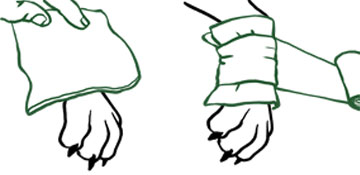
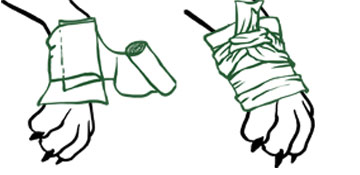
Transporting injured animals
Grasp the dog’s belly by the back legs and at the front of the chest. The animal’s injured side should be facing away from your body. If the dog has injured or possibly broken its legs, the legs should be allowed to hang freely.
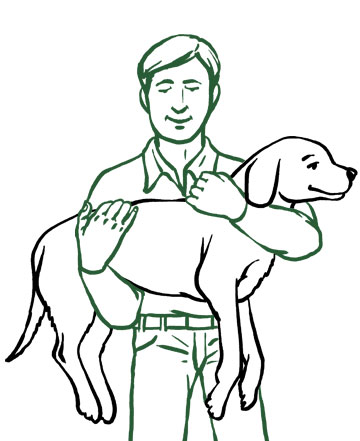
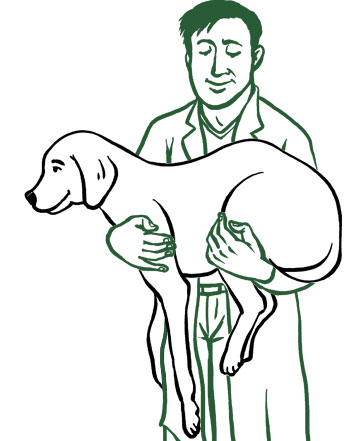
If the animal is unconscious, you should first place it and then move it on its side. Make sure that the dog is lying on its uninjured side.
Carefully lay the dog on its side, bring the head and spine into a straight line, and carefully pull the front and hind legs apart. If the dog is unconscious, hyperextend the head, open its muzzle and pull its tongue out of its mouth so that the dog can breathe easily.
Heat stroke
Long-haired dogs with dense undercoats and brachycephalic (short-nosed) breeds are particularly at risk of circulatory failure from overheating. Symptoms of heat stroke include heavy panting or salivation, rapid heartbeat (felt on the left lateral chest wall) and high pulse rate (felt in the middle of the inner thigh, usually at 80-120 beats per minute), fatigue, uncoordinated movements and possibly cramps or even unconsciousness. In this case, you should immediately move the dog into the shade or a cooler environment and cool it down with water or wet cloths to lower the body temperature. To avoid shock, never douse the whole animal with water, but proceed slowly from the paws towards the heart.
Limber tail syndrome
Limber tail sounds harmless at first, but is actually a painful condition for your four-legged friend. This condition is particularly common in the summer, the swimming season – often after the dog has been in the water for a long time.
In terms of symptoms, limber tail syndrome is mainly recognisable from a characteristic tail posture. The tail will be straight for a few centimetres and then hang limply down. Due to the pain, the dog will usually also stop urinating and defecating and adopt a pain-relieving posture when sitting (tilting the pelvis sideways). It will also react with extreme pain when the base of the tail is touched.
If your dog shows any of the above symptoms, you should consult a veterinarian as soon as possible so that your dog can be treated accordingly. Treatment usually involves painkillers and anti-inflammatories or the prescription of physiotherapy. Warm compresses at the base of the tail can also have a positive effect. Above all, however, one thing is the order of the day: rest and relief from pain.
Poisoning
If your dog has eaten a toxic substance, it is important for the vet to know what it was, how much was eaten and when. If any of the substance is left over, take it to the vet so that they can take the correct action.
If you are not sure whether your dog has been poisoned, you should look out for the following symptoms: heavy salivation, vomiting, diarrhoea, circulatory problems, neurological function losses such as apathy or a staggering gait. In this case too, consult the vet immediately and do not try to make the dog vomit, for example. In the event of eye or skin irritation, rinse with water only.
Injured paw
Due to constant contact with dirt, the paw is acutely at risk of infection if it gets injured. Furthermore, as a paw injury is a very unpleasant and painful condition for the dog, you should not wait long before applying first aid to the wound, removing the foreign body if easily possible and applying a paw bandage. Then it’s also a good idea, at least in the case of severe injuries, to consult a veterinarian and agree on what to do next.
- Place long cotton strips between the toes and under the dewclaw. The strips should be long enough and protrude a fair bit so that they do not slip after the dressing is applied.
- Place a cotton strip about the width of the paw from the top to the underside of the paw.
- Now start to fix the cotton strip in place with the elastic gauze bandage. Apply the gauze bandage once from the top to the underside of the paw.
- Wrap the gauze bandage around the paw a few times so that it is completely covered. Tighten the bandage so that it fits snugly. However, the paw should not be constricted, and the blood circulation must not be impeded.
- Wrap waterproof tape around the finished dressing in a few places. To prevent the bandage from slipping off, apply the upper end of the tape so that about half of it is on the coat.
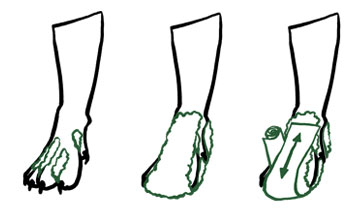
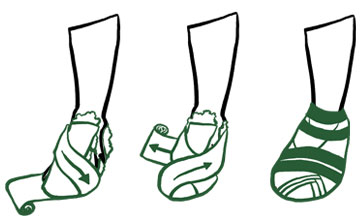
Muzzle bandage
An injured dog may try to bite you out of shock, fear or pain. To prevent this danger, you can put on a muzzle bandage.
- Carefully place and knot a sling around the jaw - the knot should be on top.
- Pass the sling around the jaw again and tie another knot at the bottom.
- Then guide the sling (under the ears) to the nape of the neck and knot it there one last time.
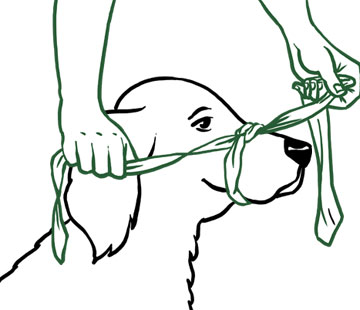
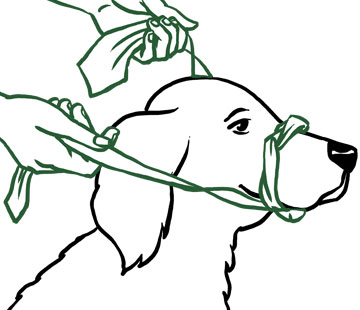
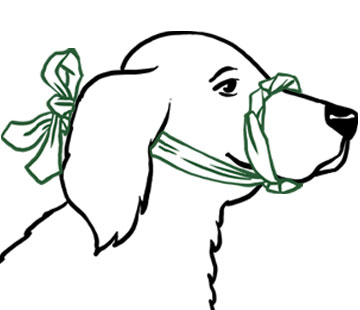
Product recommendation
The benefits of PLATINUM dog food
- PLATINUM uses a unique preparation method called FSG, which offers numerous advantages compared to conventional dog food.
- Dog food prepared with FSG is gently cooked only in its own meat juice and is therefore nutrient-rich like BARF, excellent for building muscles and also extra tasty for your dog.
- With at least 70% fresh meat in the dry dog food and 83% fresh meat or fresh fish in the wet dog food, PLATINUM places great value on a composition of the food that is adapted to the needs of dogs.
- The declaration and composition of dog food prepared with FSG is tested regularly and independently by ELAB Analytik GmbH (formerly TÜV SÜD ELAB) - for canine health protection.
- PLATINUM is generally very well accepted by dogs of all breeds and ages. Even four-legged friends with sensitive digestion or intolerances usually tolerate PLATINUM dog food well.
- All products are free of soya, GMOs and gluten. In addition, no flavour enhancers, attractants, odourants or colourings are used.
- Over 80,000 positive customer reviews at Trusted Shops speak for themselves!


 Deutsch
Deutsch
 English
English
 Nederlands
Nederlands
 Français
Français

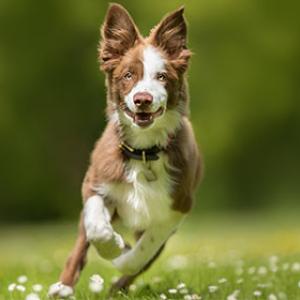

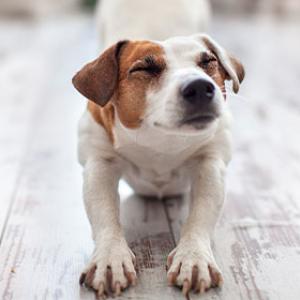
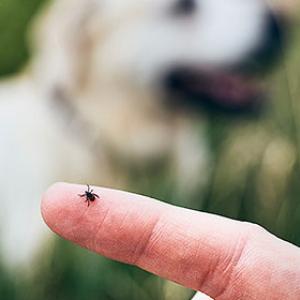
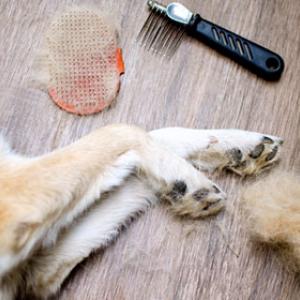
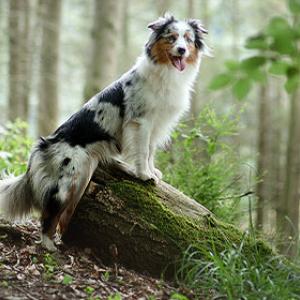
.png)
.png)
.png)
.png)